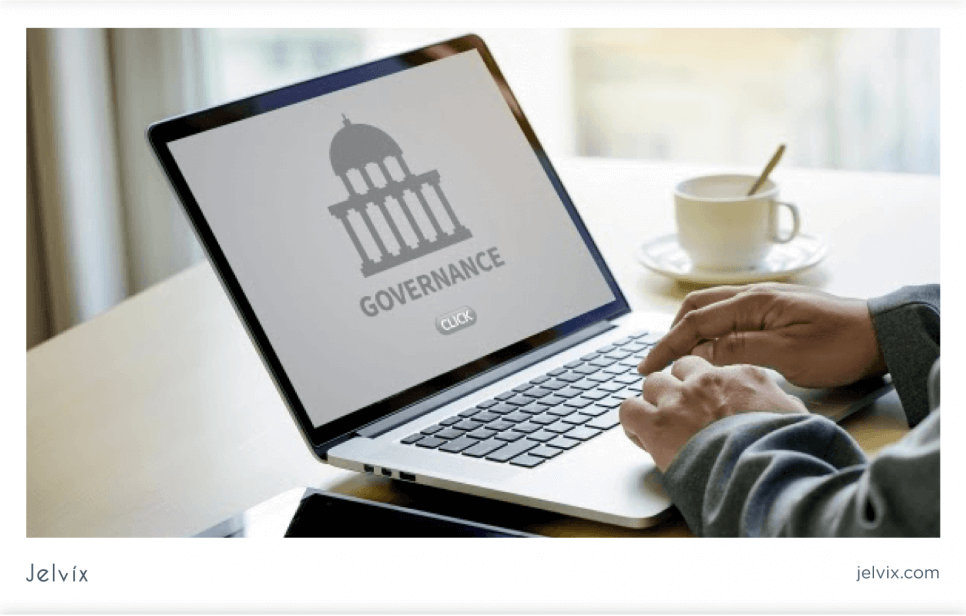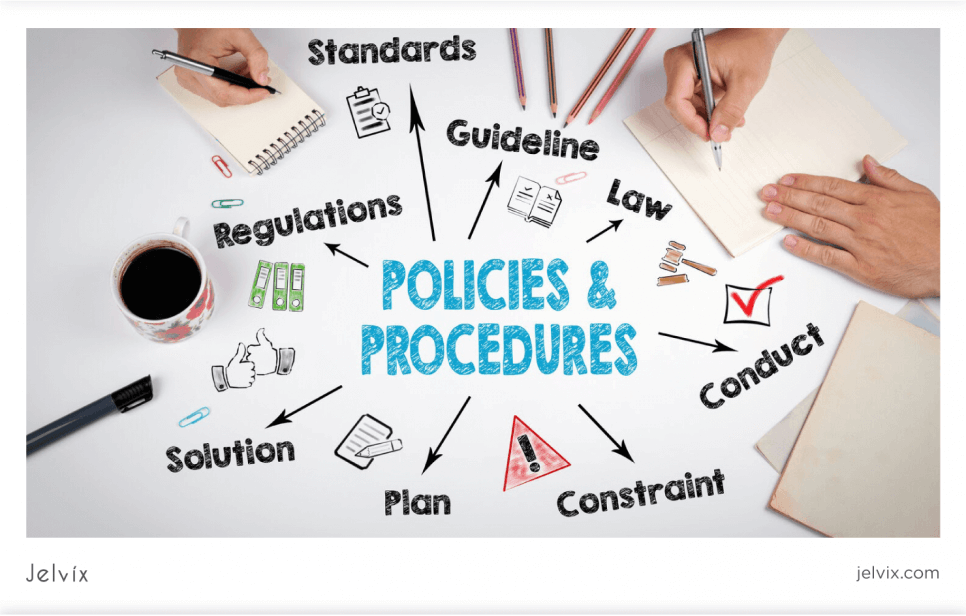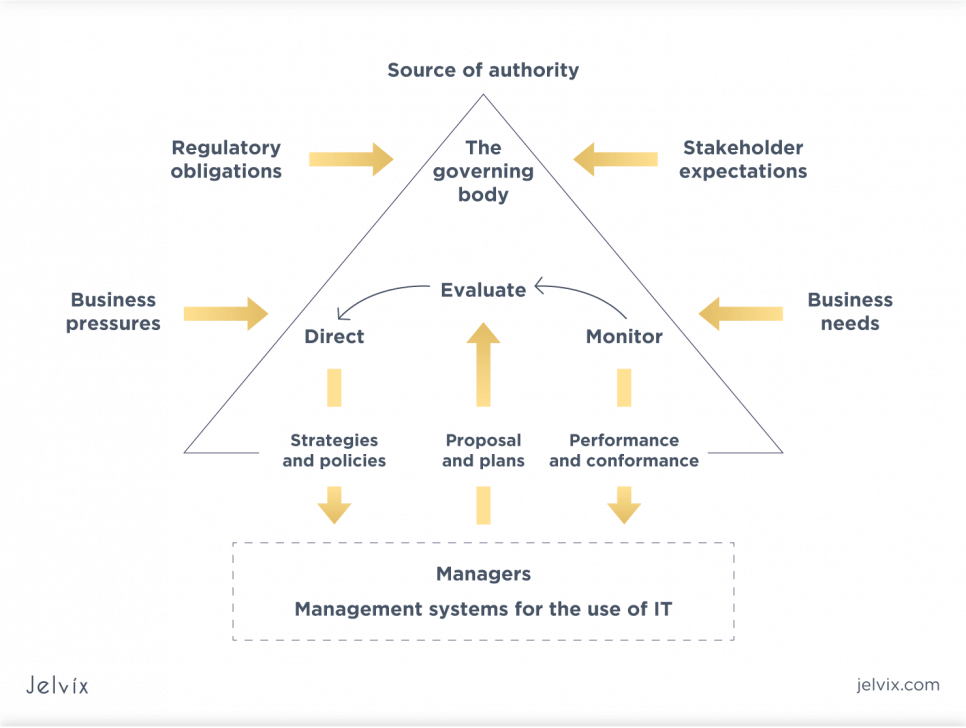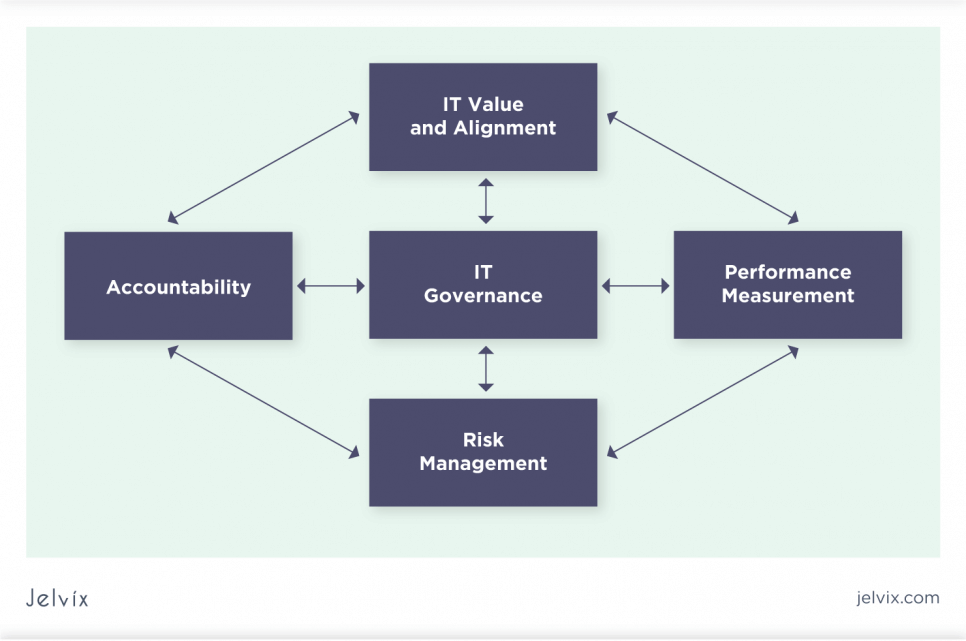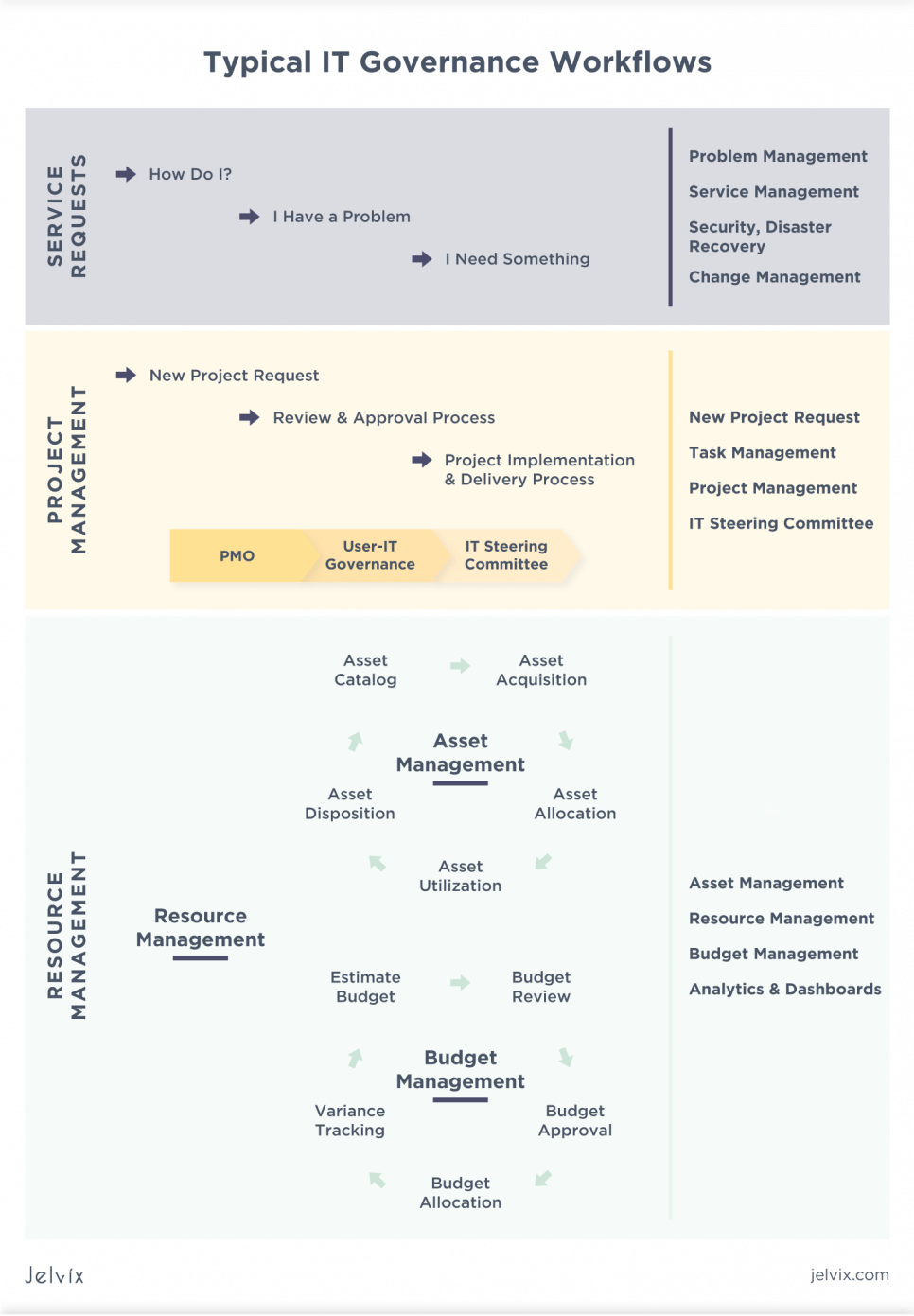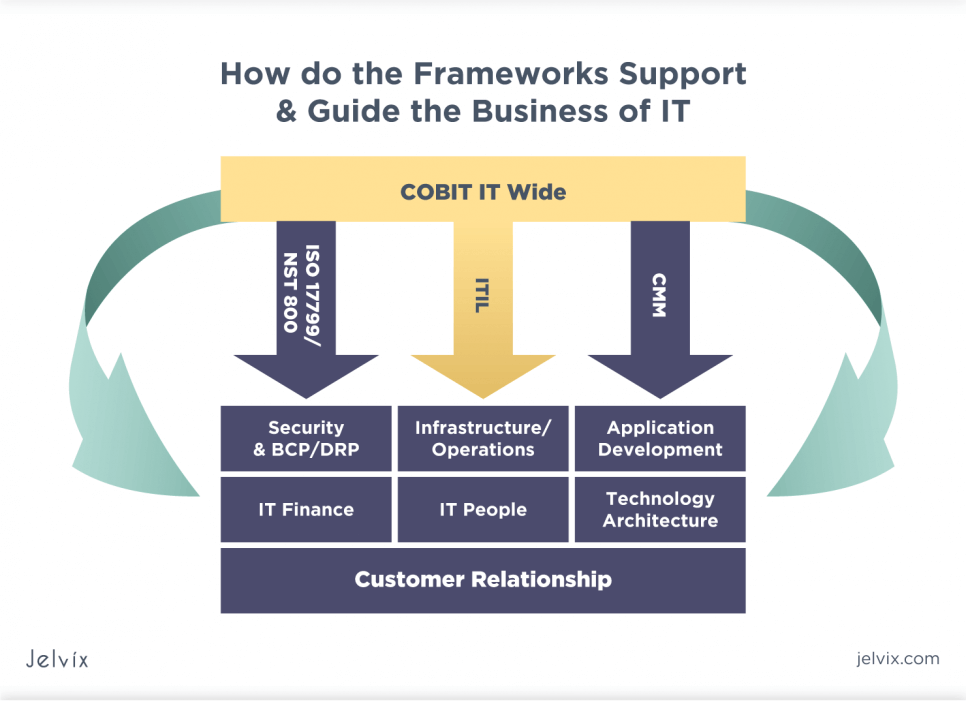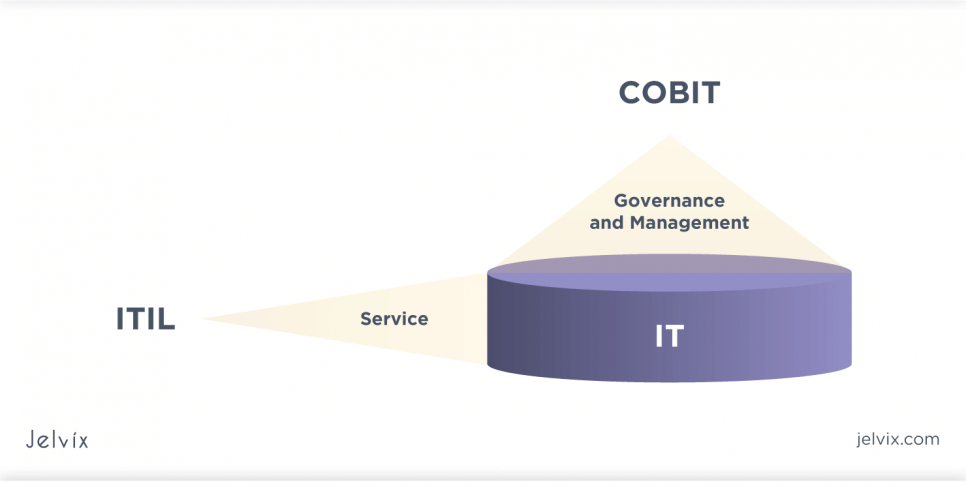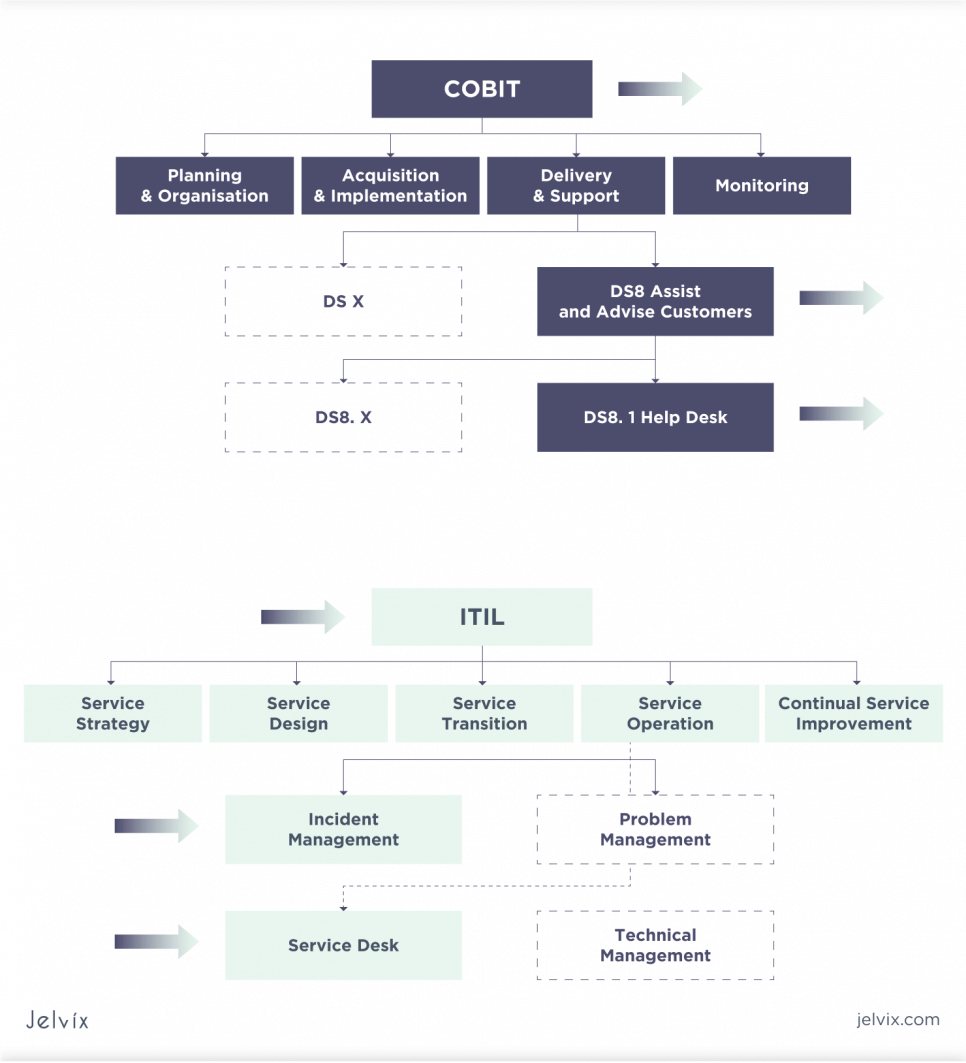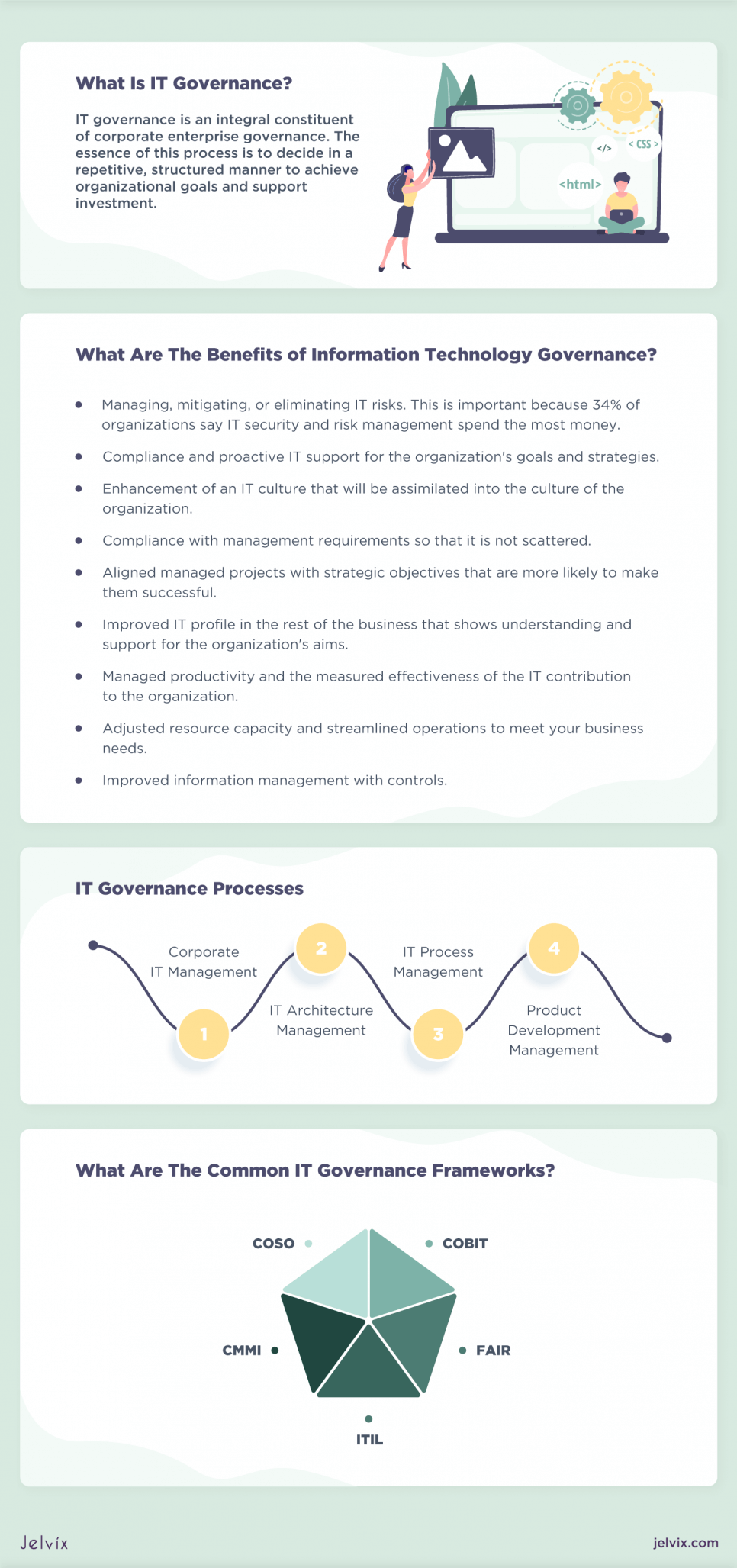IT is a business asset gaining importance in every industry, especially in light of the proliferation of new technologies. But implementing IT systems alone cannot provide strategic value. IT performance needs to be consistent with stated objectives, benefit businesses, and mitigate risks.
Companies must integrate all processes and relational capabilities into a holistic structure focused on the corporate purpose and setting guidelines and standards. And management of efficiency, risks, and costs of information technology should be professional and clearly aligned with the business strategy. Therefore, we advise companies to use the concept of information technology governance to model their strategic IT management workflow.
What is Corporate Governance?
As defined by ICSA, Institute of Governance, It is “a set of tools that allows you to more effectively solve the problems associated with the management of the company. Corporate governance guarantees the enterprise appropriate decision-making processes and controls to balance the interests of all stakeholders.“ Stakeholders, in this case, include everyone from the board of directors and management to customers, employees, and the public.
The fundamentals of corporate governance and its activities should include IT and not be separated from it. Corporate management should view IT governance as an important component of corporate governance, and IT leaders should actively promote this concept of collaboration.
What is IT Governance?
IT governance is an integral constituent of corporate enterprise governance. The essence of this process is to decide in a repetitive, structured manner to achieve organizational goals and support investment.
The primary aim of IT governance is to manage IT systems and allocate IT resources to create value for the organization. On the other hand, IT management is all about the operational use of IT resources, management and control over the service, as well as the organization of management of such resources. Similarly, IT controls are mechanisms that track and monitor the organization’s IT systems. We can do this by implementing an organizational structure with clearly defined responsibilities for information, business processes, applications, and infrastructure.
Industry experts have planned three elements of IT governance:
Governance Principles – as the foundation for the initiatives.
Governance Structure – outlining the roles and responsibilities of the key parties to the IT governance decision-making process.
Governance Process – comprising the stages of reviewing, evaluating, approving, or rejecting new IT initiatives.
What is the Purpose of IT Governance?
IT governance issues are rarely published because they can damage an organization’s reputation. We knew of the mistakes for large corporations or government organizations and were often associated with poor management of IT investments. For example, in 2005, Ford Motor Company spent $400 million on a new IT-based procurement system, which it had to abandon later. That same year, the FBI allocated $170 million on a virtual file system that turned out inoperative, so they canceled it. The reasons for these failures are similar and include:
- Unverified data and delays in decision making
- Blurred responsibilities and roles
- Unrealistic expectations
- Inconsistency of IT goals with business requirements
All of this could have been avoided by adopting a solid foundation for IT governance.
IT governance is a key imperative for organizations, as it helps avoid corporate disruptions and failures caused by poor corporate governance and the mismatch between business and IT goals. Based on the defined aims and strategies of the enterprise, IT management aims to ensure structured management and delivery of goods and services by the strategies of the enterprise.
IT governance adapts to changing strategic factors that influence the company’s goals, responding to changes in the business and regulatory environment, as well as the development of new technologies.
The principles, rules, and structuredness of the process are the basis for making the right decisions at the right time. They are also important for dealing with situations and ideas used to decide and explain the way of communication for discussing them. The IT governance structure is multi-level and is implemented at three levels: executive, commercial, and operational. This ensures not only smooth decision-making but also a clear path to dispute resolutions.
IT Governance Components
Gartner, an industry analysis company, has identified four distinct components of IT governance, namely:
- The value of IT and the alignment of business and IT
- IT control framework and management accountability for IT
- System for measuring IT efficiency
- IT Risk Management Models
Two components represent the driving force: strategic coherence and performance indicators. The other two represent outcomes: value delivery and risk reduction. While value delivery focuses on creating business value, risk management focuses on preserving business value.
Why is IT Governance so Important?
Almost every organization today relies on IT systems to a greater or lesser extent. The importance of IT management in the organization’s operations can vary depending on the type and size of the business. IT governance enables an organization to:
- Show measurable results in line with short- and long-term business objectives;
- Adhere to legal and regulatory obligations such as GDPR (General Data Protection Regulation), DPA (Data Protection Act), or Companies Act;
- Increase confidence in your organization’s IT services;
- Comply with certain requirements and rules of corporate governance or public listing;
- Align IT costs with business priorities to make the most of new products or services and reduce redundancy;
- Help clients achieve the desired results.
What are the Benefits of Information Technology Governance?
Modern organizations must consider and abide by many rules if they want to stay in business. These rules govern financial reporting, data storage, protecting confidential information, and disaster recovery. Clear standardization of processes and activities simplifies IT operations and eliminates red tape. But that’s not all; other benefits are field-proven and not unique to IT.
- Managing, mitigating, or eliminating IT risks. This is important because 34% of organizations say IT security and risk management spend the most money.
- Compliance and proactive IT support for the organization’s goals and strategies.
- Enhancement of the IT culture that will be assimilated into the culture of an organization.
- Compliance with management requirements so that it is not scattered.
- Aligned projects with strategic objectives that are more likely to make them successful.
- Improved IT profile in the rest of the business that shows understanding and support for the organization’s aims.
- Managed productivity and measured effectiveness of the IT contribution to the organization.
- Adjusted resource capacity and streamlined operations to meet your business needs.
- Improved information management with controls.
For example, IT governance (ITIL model) helped Procter & Gamble streamline technology teams and save $500 million over four years.
IT Governance Processes
The process that is used to manage IT comprises several practices that should be followed. This is not something you do once a year. It becomes an integral part of your interaction with IT and comprises repeatable, scalable, and controlled activities. They are reviewed regularly to ensure they continue to deliver the expected value to both internal and external customers.
Each of the related processes focuses on an unfamiliar area of IT. It also referred to this integrated collection as the IT management landscape. It includes IT systems, services, developments, processes, architectures, networks, and infrastructure. Since each of them, although linked by a common strategy, has unique characteristics, it requires a fresh approach to management. Here are some examples:
Corporate IT Management: In this case, it refers to hardware and software designed for the needs of large organizations. While large-scale systems are easier to manage than smaller ones, corporate IT management processes must be commensurate with their scale of use and complexity.
IT Architecture Management: This process establishes the principles that recent developments must comply with. IT architecture management carefully analyzes the use of any new technologies before using them and optimizes support costs.
IT Process Management: This process governs the activities taken to develop, consolidate, and support IT products. We can use it for standardization, removing dependency on individuals, and maintaining consistent results. A good example of an IT process management framework is COBIT.
Product Development Management: This is important for companies that develop their own IT products. This distinct type of IT process management spans the software development lifecycle, illustrating and overseeing development management.
What are the Common IT Governance Frameworks?
With the increasing dependence on IT and the associated increase in IT costs, the need for proven support methods is growing. Organizations around the world use many out-of-the-box IT governance structures. They help managed service providers develop and maintain their programs and adhere to policies and procedures.
COBIT: Acronym for Information and Related Technology Governance Objectives. This structure is designed specifically for corporate IT by the Information Systems Audit and Control Association. They widely regarded COBIT as the industry standard for an advanced IT governance system.
FAIR: This latest framework’s information risk factor analysis tools help organizations quantify their level of risk.
ITIL: The so-called Information Technology Infrastructure Library defines how the operations, transition, improvement, and strategy of IT services are aligned with core business practices.
CMMI: The so-called Opportunity Maturity Model Integration Framework deals with performance improvement based on a scale for assessing the quality, productivity, and profitability of an organization.
COSO: The Treadway Commission’s Committee of Sponsoring Organizations focuses on internal controls, integrating structures such as fraud prevention and risk management.
And this is not the complete list; many other IT governance frameworks offer both full and partial understanding of IT governance processes.
What is the Best IT Governance Framework?
There are many benefits to using IT governance frameworks. Besides using them as principles for safe decision-making, they provide financial benefits. For example, a McKinsey and Company report says that two-thirds of the organizations surveyed would pay an 11% premium for a well-managed stock. In addition, organizations with high-quality management are 20% more profitable than their competitors.
What is COBIT?
The industry-standard framework is COBIT that provides a comprehensive set of 37 different IT processes and tools to manage IT processes. It defines key activities, performance indicators, and process goals. The latest version considers risk management and mitigation. COBIT 5 principles that ensure effective corporate IT governance include:
- Comprehensive enterprise coverage;
- Building an integrated framework;
- Meeting the needs of stakeholders;
- Separating corporate governance from governance and incorporating it into IT;
- Creating a holistic approach to operational efficacy.
COBIT Benefits
What does COBIT stand for? The framework can help organizations of all sizes:
- Leverage IT to achieve business purposes;
- Use technology to improve operational effectiveness;
- Provide effective IT risk management;
- Boost the value of IT investments;
- Assure compliance with regulations, laws, and contractual agreements.
COBIT is designed to be flexible, so we can combine this structure with any of the other existing information technology governance models (CMMI or ITIL).
What is ITIL?
This framework specializes in IT service management and includes five sets:
- Service Design is the development and ongoing evaluation of a set of IT and service processes to fit the company’s needs best.
- Switching to Service – identifying and reducing risk factors considering planning and changes.
- Continuous Service Improvement – examining and analyzing established Key Performance Indicators and their evolution, including any bottlenecks and suggestions for optimization.
- Service Strategy – mapping the entire IT service delivery information technology governance model to match the organization’s structure as much as possible.
- After-sales Service is the provision of day-to-day operations by performing recursive tasks with helpdesk or backups.
ITIL Benefits
- Using only proven practices and the best knowledge;
- Regulating IT activities by the service level agreement;
- Solving business problems with the help of IT services and IT services for business units;
- Definition of standards and rules for IT staff;
- Implementation of quality approaches in IT service management;
- Confirming and explaining the cost of IT by the agreed service level;
- Providing the highest possible quality of IT services for users.
COBIT vs ITIL, and What is the Best Way to Use Them?
Most of the frameworks available can coexist, and this goes for COBIT and ITIL too.
They each have their own IT governance strengths – for example, COBIT focuses more on process management and ITIL on service management. Each structure is extremely successful in providing individualized governance while providing quality service management. However, when combined, COBIT and ITIL can significantly add value not only to the customer but to the entire company and its partners.
At a basic level, COBIT performs a roadmap, and ITIL provides the means to achieve the goals. For example, managers can use COBIT to decide what processes an organization demands and ITIL on how to build them.
In addition, COBIT manages IT resources from a business-wide perspective, while ITIL approaches issues strictly from an IT perspective. COBIT uses a top-down path, and ITIL uses a bottom-up path.
As you can see, one goal unites them: to make IT stable and efficient. But they don’t necessarily have to be used in conjunction: ITIL and COBIT work well independently.
With its “strategic” IT service management framework, ITIL is self-sufficient in the early stages of an organization. And COBIT is a platform for more mature and larger IT enterprises. Therefore, if you are choosing between ITIL vs COBIT, ITIL is probably better in the first stages. And when you need a more global approach, include COBIT.
Tips for Planning and Implementing an IT Governance Model
We practice various approaches to implementing an effective governance model. They depend on the strategy and results that the organization is trying to achieve, as well as the culture in which it operates. Our review of corporate governance practices shows the need for such fundamental elements:
- Clear and well-articulated strategic goals;
- Strong executive support for planning and decision-making processes;
- Distinctly defined roles and responsibilities;
- Standardized data and information transparency;
- Measurement and planned analysis of IT management practices to deliver value.
How to Choose a Framework?
Most IT governance structures can help determine how the IT department operates as a whole, what KPIs need to be managed, and how IT returns business investment. But if COBIT and COSO become the preferred choice for risk management, then ITIL will streamline service and operations. CMMI was previously intended only for software development but now extends to hardware development, procurement, and service delivery. FAIR will be best at assessing operational and cybersecurity risks.
When analyzing frameworks, we recommend analyzing your corporate culture. This will help you understand which structure or model is most appropriate for your organization and resonates with your stakeholders.
But you don’t have to be limited to just one framework – some organizations successfully combine COBIT and COSO, as well as the ISO 27001 standard.
How to Implement an IT Management Program?
The easiest way is to accept the infrastructure created by the best industry experts and used by many organizations. Many structures already include clear roadmaps for the phased implementation of an IT governance program. They also include systems of checks and balances and propose best practices to ensure that the requirements are met.
Many companies construct their models – in this case, they adapt widely used frameworks to their particular needs. For example, adopt the ISO / IEC 27001 Information Security Standard Model and then select controls.
Final Words
New technologies constantly appear and develop in the world, in which IT is the driving force. This increases the success rate of many businesses but requires a professional level of management of this entire complex system. Modern challenges require risk scenarios to be accounted for with information. Therefore, IT governance has become an important component of any successful business!
Jelvix can develop a phased implementation plan for an IT governance model tailored to your specific needs. In addition, Jelvix provides the software you need to plan processes, assign tasks, and collaborate effectively. Using it, organizations can build their IT governance structure, monitor performance optimization, and easily analyze risks.
In addition, our IT consultants and business experts audit already implemented IT management system solutions and brought them following the latest standards.
Want to implement IT governance and looking for a suitable framework? Contact us to know all about best practices!
Need a qualified team?
Boost your business capacity with the dedicated development team.


